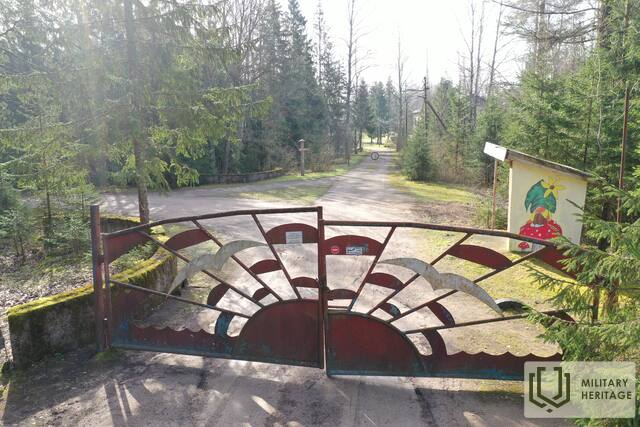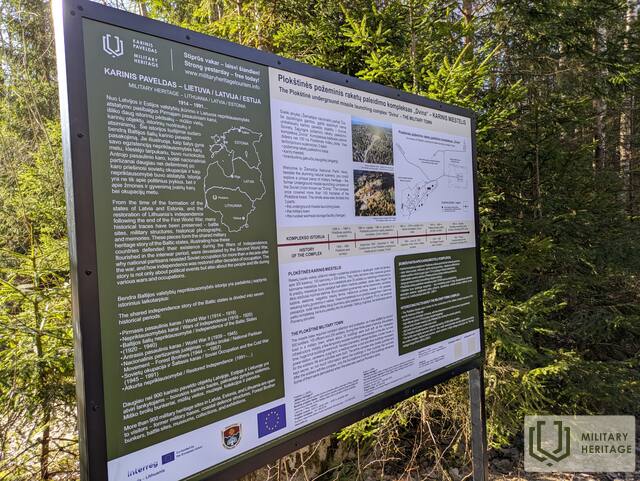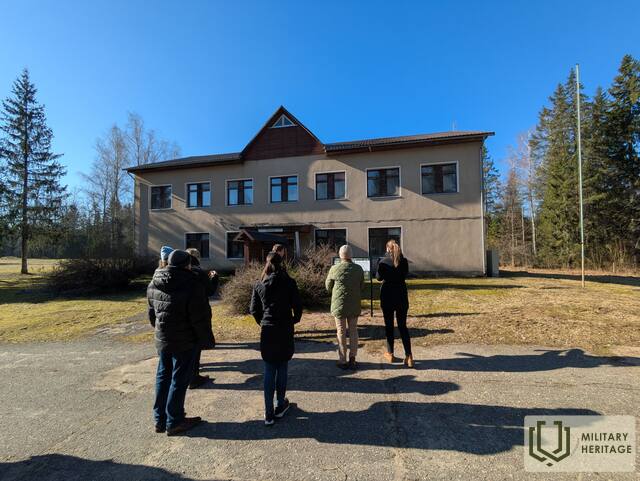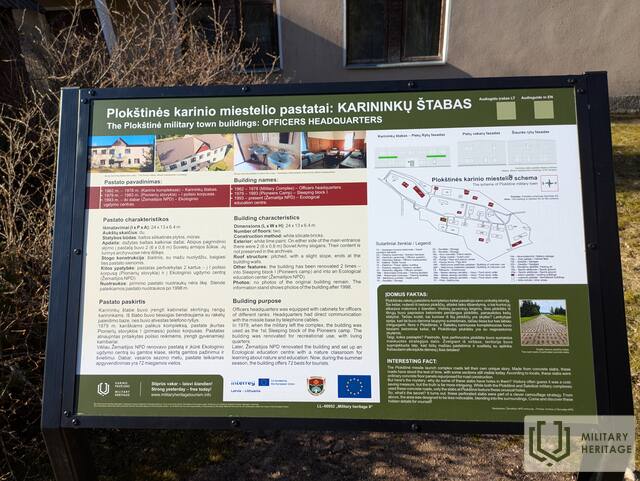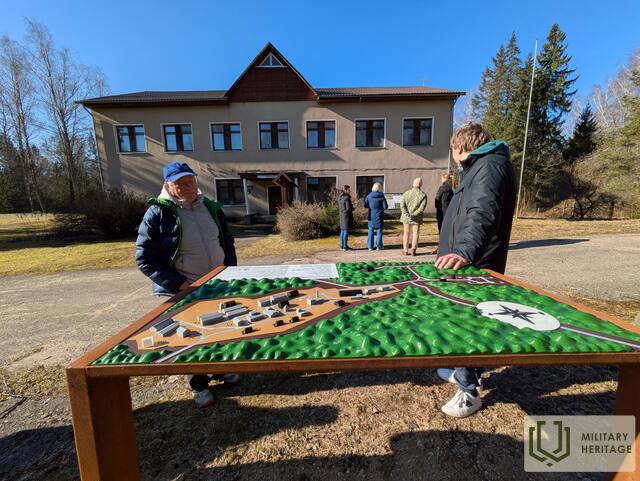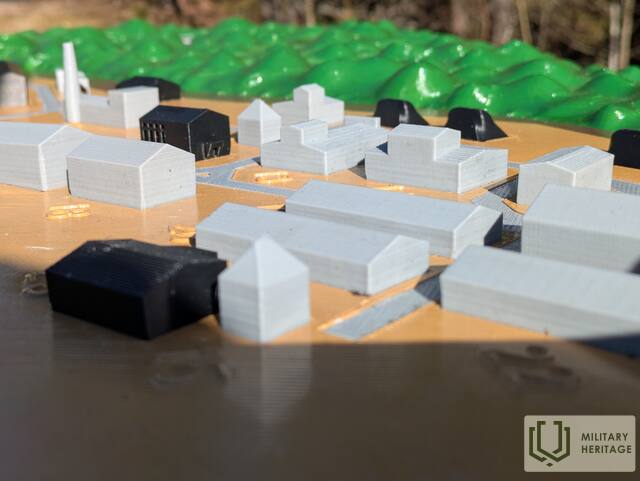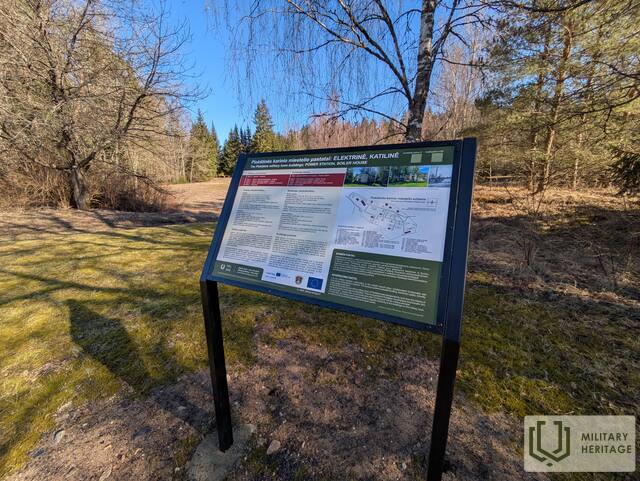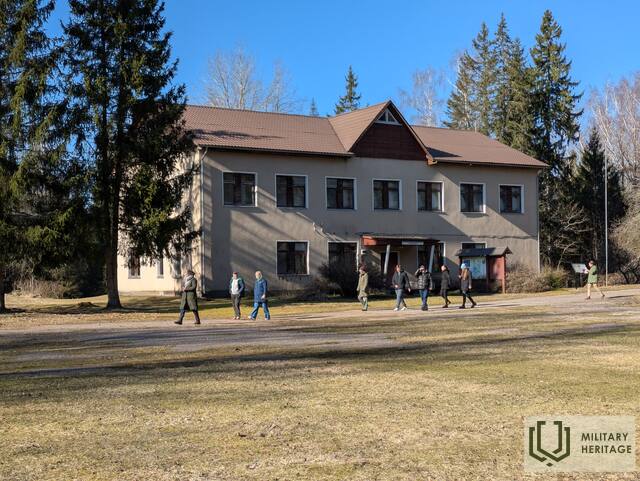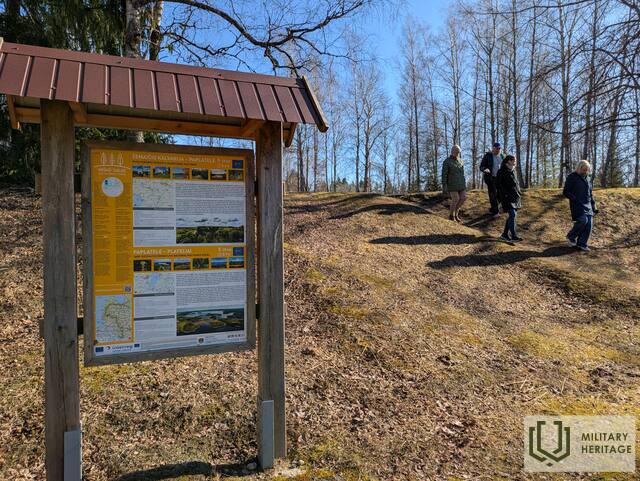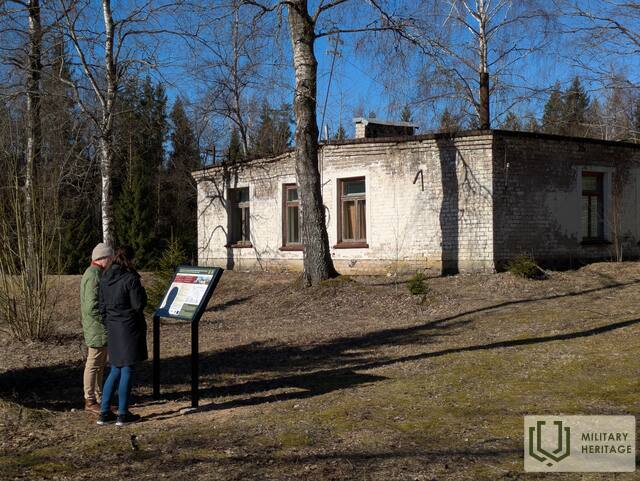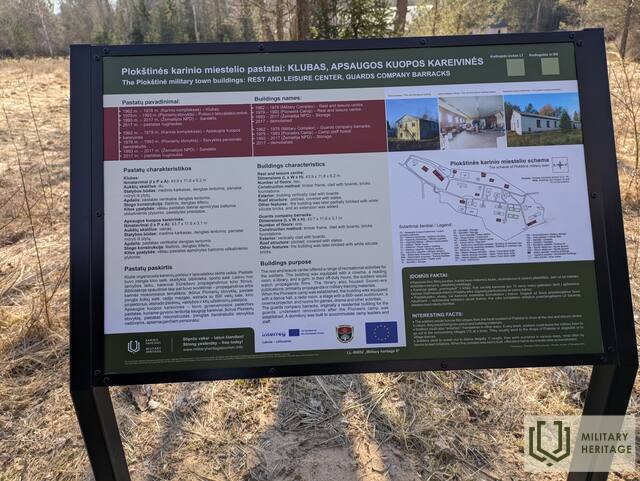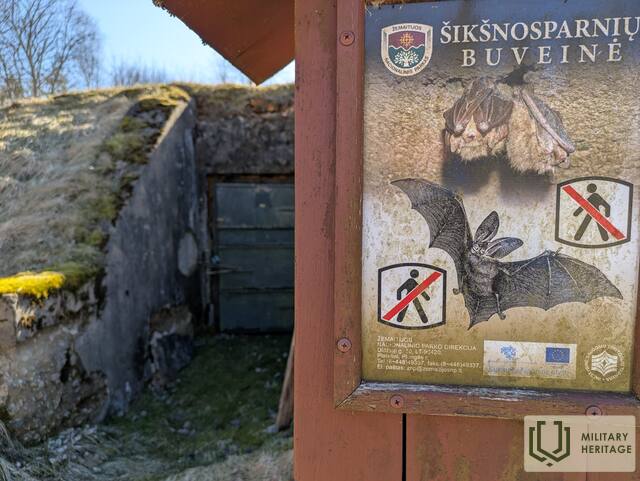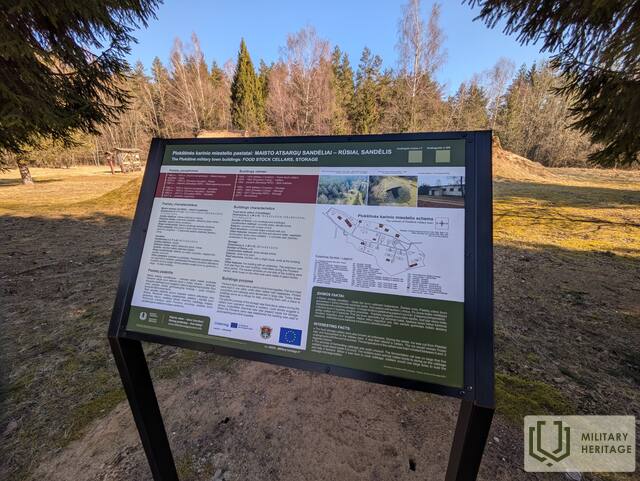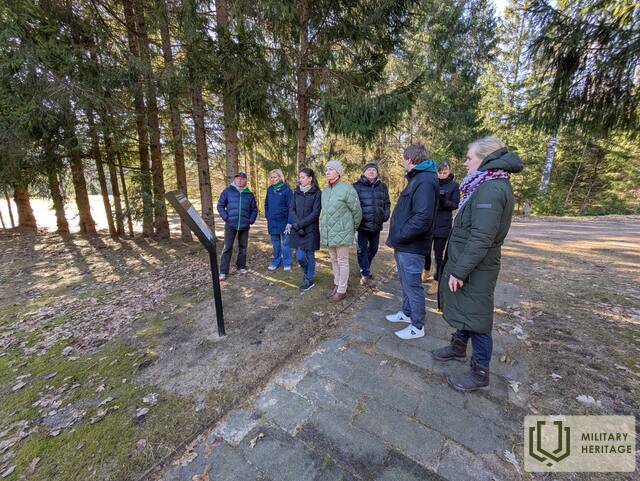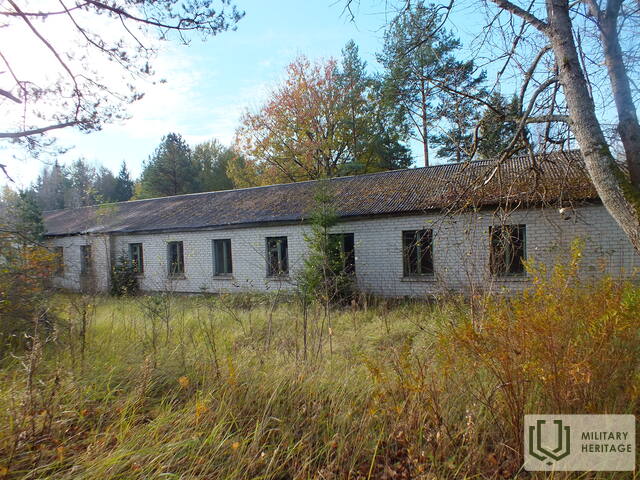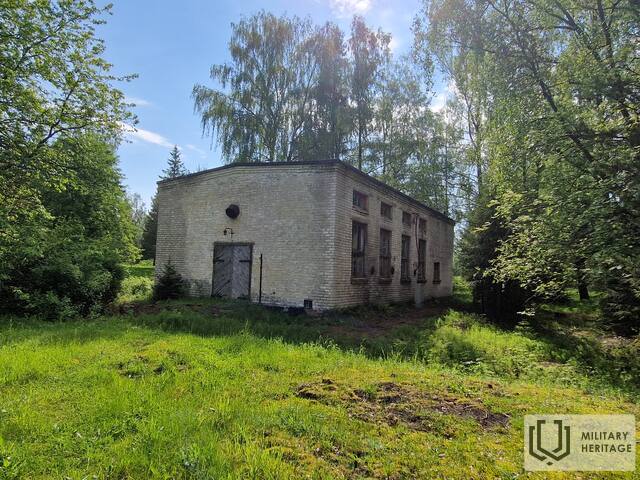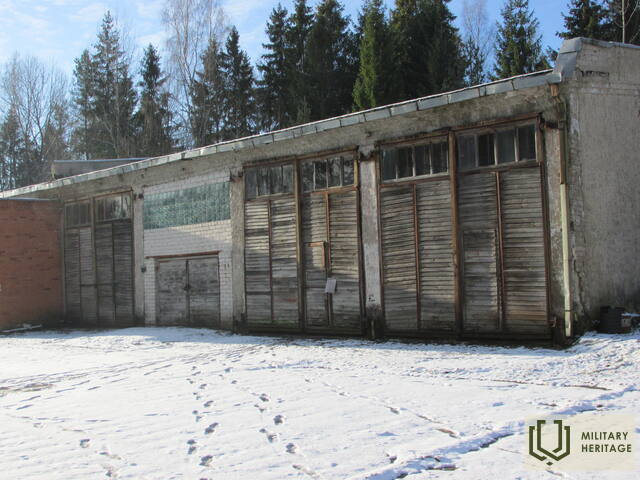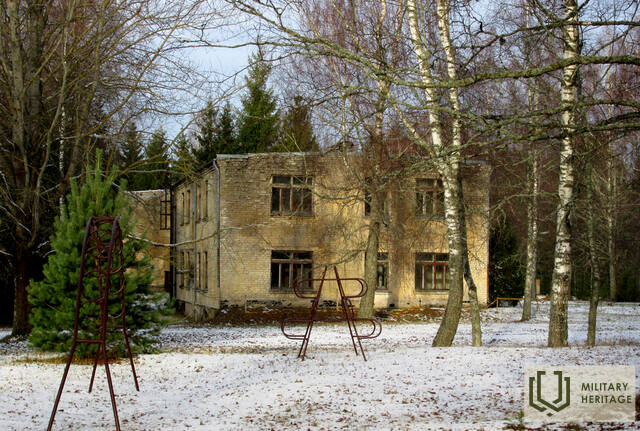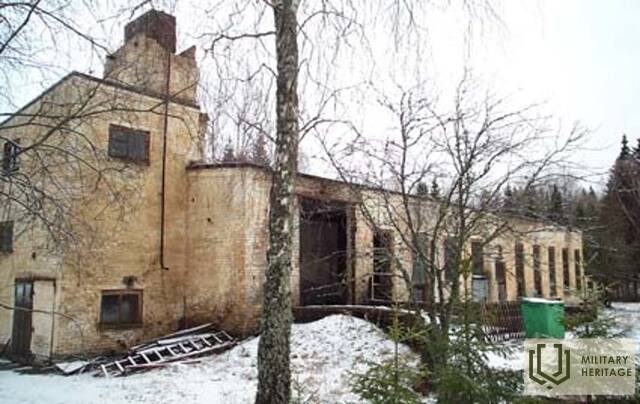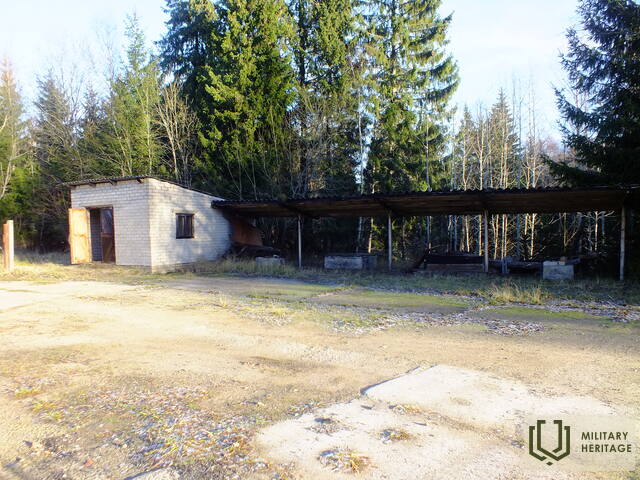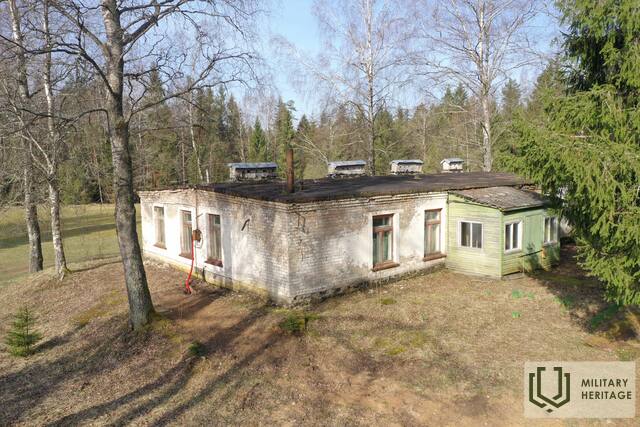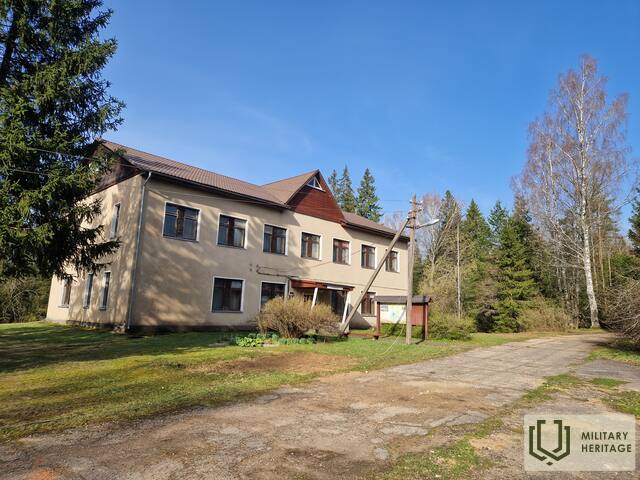Plokštinė Military Town Military town

In 1962, one of the first underground launch complexes for R-12 ballistic missiles in the Soviet Union, the Dvina, was put into operation in Plokštinė Forest (Plungė district).
A military camp was set up 0.5 km from the missile launch site. It occupied an area of 12 hectares, and approximately 30 buildings were built here for various purposes, including residential houses (barracks), officers’ headquarters, two canteens, a boiler house, a power station, a medical post, a club, a pig farm, warehouses, garages, and other structures.
The Plokštinė underground missile launching complex was operational until 18 June 1978. The Soviet soldiers left the area, taking only their weapons with them. In 1979, the management of the former military complex was transferred to the Republican Association of Agricultural Recreation Facilities of Plungė District, and the Plateliai Pioneer Recreation Camp “Žuvėdra” was established at the military campus site. The site was reconstructed and adapted to the needs of the camp, which operated until 1990. After the restoration of Lithuanian independence, the Pioneer Camp was closed.
Since 1993, the site has been managed by the Žemaitija National Park Directorate. In 2017, many of the structures on the military campus were demolished due to their state of disrepair. Today, there are about ten buildings left at the site, and visitors may see them from the outside. Information boards about the former buildings and their functions have been installed.
Used sources and references:
Dvina Nuclear Missile Launch Base - Past Explorers
https://www.praeitieszvalgas.lt/sachtine-branduoliniu-raketu-paleidom-baze-dvina/
Educational programs
Tour of the former military town
Near Lake Platelia, in the forests of Ploštinė in 1960. the construction of the underground base for launching thermonuclear missiles "Dvina" was started. in 1962 at the end of December, the first combat alert was announced at the base. In four 30-year-olds 4 R-12U type medium-range ballistic missiles armed with thermonuclear warheads are deployed in deep shafts. They were intended to destroy Western European countries.
The top secret facility required a large amount of military equipment and service and command personnel. For that purpose, a town with 30 buildings was established 500 m from the missile launch site. The entire facility occupied an area of about 12 hectares, surrounded by as many as 6 protective fences.
What happened here, what was the purpose of the buildings and what fate befell the military town and what secrets Ploštinė forest still keeps, you will find out on the excursion...
Related timeline
Related stories
Withdrawal of the Russian army from Lithuania in 1993.
On August 31, 1993, the last military echelon of the Russian army passed through Kena railway station, officially ending the nearly 50-year Soviet military occupation of Lithuania.
About the secret hangar of the nuclear base
A top-secret hangar was installed at the underground thermonuclear missile base in the Plokštinė forests, about which local residents still know very little and whose purpose is shrouded in rumors about the storage of nuclear missile warheads.
Secret Veterinarian
Veterinary doctor Stanislovas Mikašauskas, who worked at the Plokštinė military base, shares his memories of unusual access to the base's territory and strict secrecy even in an informal environment.
K. Meškauskas' memories of the Plungė district missile bases
The former missile bases in the Plungė district hide an impressive history of the Cold War - from the secret transportation of rocket fuel at night to the construction of underground shafts with artificial pressure. The memoirs of doctor Kajetonas Meškauskas reveal little-known details about the activities of the Soviet military and the lives of the builders. His story is not only about the base, but also about a man who found himself in the middle of history.
In the footsteps of nuclear weapons in Šateikiai Forest
In the period 1960-1978, in the forests of Šateikiai village, in the Plungė district, a ground-based missile launch base operated, where medium-range thermonuclear missiles R12U were deployed. After the missiles were transported, the 384th High-Power Artillery Brigade was deployed at the base. At its disposal were self-propelled 203 mm caliber howitzers 2S7 "Pion" and a variety of other weapons, which cost lives.




